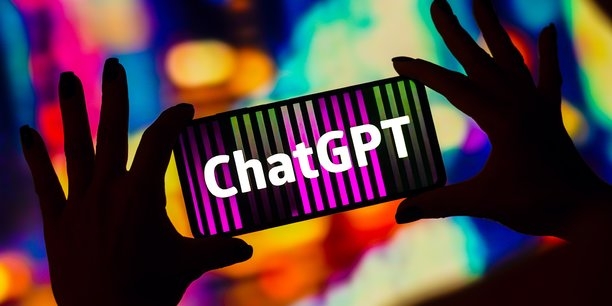
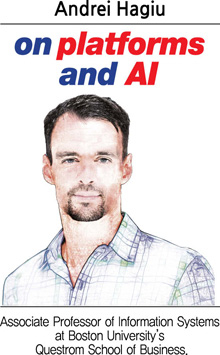
Generative AI’s ability to create or improve products and services means it has to potential to commoditize some businesses, while greatly enhancing the competitive advantage of others. In what follows I will discuss the characteristics that make products or services susceptible to disruption by generative AI, and those that make them more resilient. To illustrate, I will then compare Chegg and Duolingo, two businesses which have been impacted very differently by the emergence of generative AI.
Products and services at Risk of Commoditization
Generative AI is well-suited for tasks that rely on vast datasets, pattern recognition, and the automation of routine processes. Consequently, sectors relying on such tasks are highly vulnerable to AI disruption.
The most immediate examples include the following:
Content Generation: Tasks such as writing articles, creating social media posts, or producing videos are easily automated by AI tools like ChatGPT, which can generate coherent and persuasive content in seconds. Businesses providing content as a primary service may struggle to retain a competitive edge as generative AI becomes increasingly accessible.
Code Generation: Platforms like GitHub Copilot and OpenAI’s Codex are already capable of generating code based on user prompts. Basic programming and debugging tasks are now more accessible to non-experts, making certain coding roles more susceptible to replacement.
Product Design: In creative sectors like gaming, clothing, and furniture, generative AI can design
visual assets, gameplay ideas, and product prototypes. While human designers bring unique creativity, AI’s speed and cost efficiency could pressure companies to adopt AI for cost-effective initial designs.
Advertising and Sales Campaigns: AI tools that generate advertisements, sales copy, or branding materials are increasingly effective at analyzing target audiences and creating tailored content. This reduces the need for human copywriters in some marketing functions.
Customer Service: AI-powered chatbots can now handle most customer inquiries without human intervention. While some complex issues still require human assistance, AI has significantly reduced demand for human-led customer service.
Education and Tutoring: Generative AI’s ability to answer questions, provide learning pathways, and tailor responses based on user needs has placed traditional educational services at risk. Tutoring platforms offering basic subject help could lose market share as students turn to generative AI for instant assistance.
Obviously, not all human workers in these industries will be replaced, but the scope and demand for human involvement in many of the relevant tasks will diminish as AI-generated alternatives become more affordable.
Factors that Make Products Resilient to AI Disruption
While the list of vulnerable sectors above provides a good start, it is difficult to extrapolate from those examples the fundamental characteristics that make products more or less likely to be disrupted by generative AI. This is why I found it useful to follow Charlie Munger’s advice of inverting problems, and ask the opposite question: what intrinsic aspects of a product are harder to replace with AI and therefore make the product more resilient to disruption by (generative) AI? What follows is not an exhaustive list, but it arguably contains the most important factors that make products resistant to AI disruption. This framing also has the advantage of pointing out what businesses can and should do in order to improve their resilience to AI disruption.
Physical Interactions
Products and services requiring physical presence or real-world interactions are naturally resistant to disruption by AI, which remains constrained to digital realms. For example, spa treatments, haircuts, massage therapy, and products requiring sensory experiences(e.g., perfume, high-quality textiles, travel) cannot be digitally replaced. Industries such as construction and mining, which depend on physical labor and interaction with real-world materials, are also unlikely to see complete AI replacement. AI can certainly assist in decision-making and improve worker productivity in these fields, but the fundamental physical components ensure continued demand for human expertise.
Network Effects
Products where a large part of the value resides in network effects stemming from social interactions, community or user-generated content are difficult for AI to replace. For example, platforms like Reddit, LinkedIn, and X rely on unique contributions from a diverse user base, which AI cannot replicate. An AI-based “social” network like https://socialai.co/, where each user gets customized AI followers, is obviously a very poor substitute for human social networking. Similarly, online games like Fortnite and Roblox are resilient to AI displacement not so much because of their actual game content, but because they involve player-to-player interactions and entertainment.
Human Connection and Empathy
Services requiring empathy, cultural sensitivity, and interpersonal connections remain less vulnerable to AI disruption. AI may offer personalized content but cannot replicate the nuanced human touch that builds trust and engagement. For example, therapy, personal training, and live teaching rely on the nuances of human communication. Generative AI may be able to generate exercises or provide advice, but it lacks the ability to form genuine emotional connections with clients.
Creativity and Cultural Sensitivity
Products that are highly creative or require a deep understanding of cultural trends are less likely to be replaced by AI, which tends to operate on learned patterns rather than original insights. For example, art, fashion design, and film production are industries where cultural sensitivity, originality, and responsiveness to emotional or social cues are critical. Generative AI can produce impressive creative outputs but lacks true innovation and a deep understanding of cultural trends.
Regulatory and Safety Concerns
Industries governed by strict regulations, high accountability, and ethical concerns are naturally resistant to AI automation, given the complexity of compliance. For example, healthcare, finance, and legal services require rigorous standards and often rely on trust. AI alone cannot fully satisfy the need for accountability and regulatory compliance in these fields. These industries rely on trusted relationships, professional accountability, and regulatory frameworks that are challenging for AI to navigate independently.
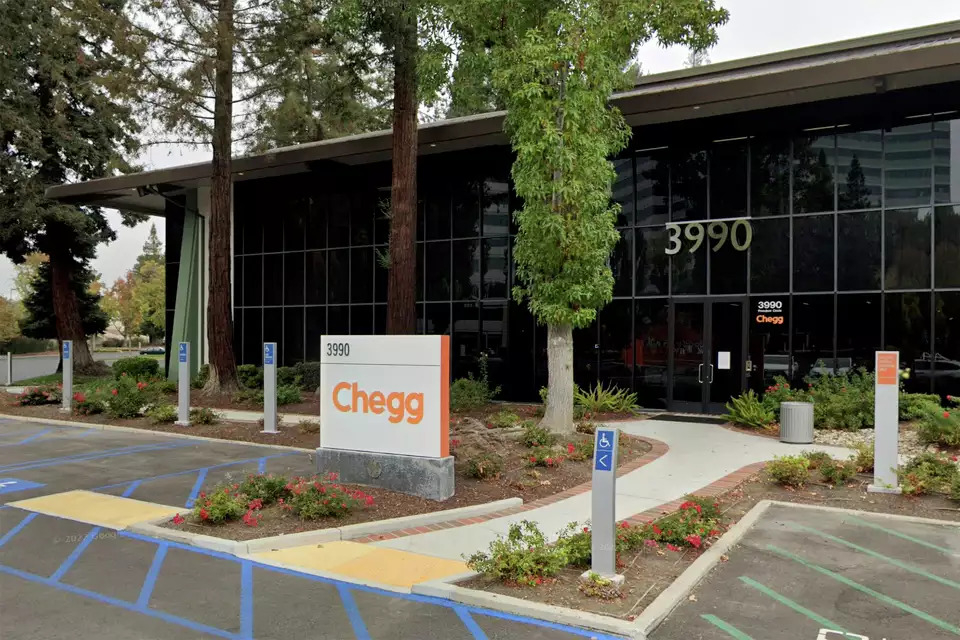

Chegg vs. Duolingo
To illustrate some of the points above, it is useful to compare two purely digital businesses, Chegg and Duolingo, that face the threat of disruption by AI. Chegg provides students with step-by-step textbook solutions, writing assistance, practice exams and live Q&A with online tutors. Duolingo offers language lessons structured as interactive and gamified activities (streaks, leaderboards), and also includes virtual events. In principle, generative AI can be quite disruptive for both Chegg and Duolingo. Rather than signing up for Chegg, students can simply ask LLMs like ChatGPT or Claude for help with their homework. And rather than using Duolingo, language learners can ask LLMs to create customized language exercises, simulate real-world conversations, and adapt to a learner‘s unique pace and needs. And both companies seem to have embraced-or at least tried to embrace-generative AI. In early 2023 Chegg redesigned its services around generative AI tools, which are offering its student subscribers personalized learning solutions. Similarly, in March 2023, Duolingo launched “Duolingo Max”, a premium subscription tier powered by OpenAI‘s GPT-4. This tier introduced features like “Explain My Answer” and “Roleplay,” offering users in-depth explanations and interactive conversation practice. Despite these similarities, the rise of generative AI over the past two years (ChatGPT was launched in November 2022) has impacted the two businesses in very different ways, as reflected in the evolution of their respective stock prices. As of November 8, 2024, Chegg Inc. (CHGG) is trading at approximately $1.70 per share, down from around $28 per share two years ago. This represents a decline of about 94% over the past two years. This stands in sharp contrast to Duolingo. As of November 8, 2024, Duolingo Inc. (DUOL) is trading at approximately $320 per share, up from $70 per share two years ago. This represents an increase of about 350% over the past two years. So how can we make sense of this huge difference in the eyes of investors? Is it mainly that Chegg’s offerings are inherently more exposed to commoditization by AI than Duolingo’s or is it because Chegg was slower and less effective in its efforts to adapt? The answer is: a combination of both. Indeed, one could argue that Chegg’s product is more transactional and straightforward (asking for help with specific homework issues), which therefore means it’s easier to replace by AI. By contrast, creating an engaging language learning plan is more complicated and therefore allows more scope for human creativity and ingenuity, which would make it less vulnerable to AI.
That being said, it is also quite apparent that Duolingo’s product strategy has been much better suited to deal with disruption by generative AI than Chegg’s. Indeed, a big driver of Duolingo’s success are its social features, such as leaderboards, streaks, and peer competition, which create a sense of community and engagement that goes beyond the core language-learning content. In other words, Duolingo has created community-based network effects that make the service more appealing than solo learning with an AI-powered system. By contrast, Chegg has not built any such community-based network effects, which has left its service a lot more vulnerable to replacement by AI.
Concluding thoughts
The discussion of factors that can render products resilient to AI disruption and the comparison between Duolingo and Chegg provide some valuable lessons for all businesses. First, every business should add or double-down on features that are hardest for AI to disrupt, such as for example enhancing physical, social, or empathetic elements. Second, rather than viewing AI as a threat, businesses should embrace AI where it is clearly better than humans (e.g., repetitive and data-intensive tasks) and leverage it to create unique data feedback loops that continuously improve products. This approach positions AI as a tool to boost competitive advantage rather than merely a cost-cutting substitute. The same principles apply to individual workers. Instead of waiting in fear of being replaced by AI or opposing its adoption in one’s organization or industry, better to treat it as an opportunity. Every worker should reflect on which parts of one’s job are best outsourced to AI and which are worth developing deep expertise in-where human judgment and intuition will continue to be necessary.
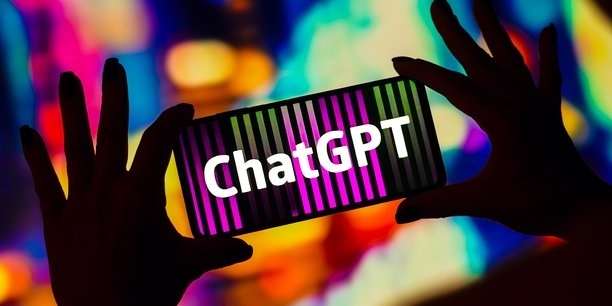

생성형 AI 심판대… 성공할 제품, 사라질 제품
생성형 인공지능(AI)이 제품과 서비스를 창조 혹은 개선할 수 있다는 말은 곧 생성형 AI가 비즈니스를 범용화할 수도, 비즈니스의 경쟁력을 극대화할 수도 있다는 뜻이다. 이번 칼럼에서는 생성형 AI 혁신을 만났을 때 더 파괴되기 쉽거나 반대로 더 회복력이 뛰어난 제품과 서비스는 어떤 특징을 가졌는지 알아보자. 그런 다음 이해를 돕기 위해 생성형 AI에 서로 전혀 다른 영향을 받은 두 기업, 체그와 듀오링고의 사례를 살펴보기로 하자.
범용화 위기에 처한 제품과 서비스
생성형 AI는 방대한 데이터, 패턴 인식, 단순 작업의 자동화를 기반으로 한 업무에 적합하다. 따라서 이런 업무에 의존하는 분야는 AI로 인해 와해할 위험성이 크다. 다음과 같은 예를 쉽게 떠올릴 수 있다.
▶콘텐츠 생성=기사 혹은 소셜미디어 게시물 작성, 영상 제작 같은 작업은 챗GPT 등 AI 툴로 손쉽게 자동화된다. 이런 툴은 설득력 있고 조리 있는 콘텐츠를 순식간에 만들 수 있다. 콘텐츠가 핵심 서비스인 비즈니스는 생성형 AI가 보편화될수록 경쟁력을 유지하기 어려울 수 있다.
▶코드 생성=깃허브 코파일럿, 오픈AI 코덱스 같은 플랫폼은 이미 사용자 프롬프트를 기초로 코드를 짤 수 있다. 기본적인 프로그래밍과 디버깅 작업은 이제 비전문가도 더 쉽게 이용할 수 있기 때문에, 일부 코딩 업무는 대체될 가능성이 높아졌다.
▶제품 디자인=게임, 의류, 가구 등 창의적인 분야에서는 생성형 AI가 비주얼 에셋, 게임 방식에 대한 아이디어, 제품 프로토타입 따위를 디자인할 수 있다. 인간 디자이너는 고유의 독창성이 있지만, AI는 속도와 비용 면에서 효율적이기 때문에 기업들은 가격 대비 양질의 초기 디자인을 만들기 위해 어쩔 수 없이 AI를 활용할 수도 있다.
▶광고 및 판촉 활동=광고, 판매용 문구, 브랜드 자료 등을 생성하는 AI 툴이 타겟층을 분석하고 맞춤형 콘텐츠를 제작하는 능력이 점점 진화하고 있다. 그 결과 일부 마케팅 영역에서는 인간 카피라이터의 필요성이 줄어들고 있다.
▶고객 서비스=이제는 AI 기반의 챗봇이 인간의 개입 없이도 고객의 문의를 대부분 처리할 수 있다. 일부 복잡한 문제는 여전히 인간의 도움이 필요하지만, AI로 인해 인간 위주의 고객 서비스 수요는 현저히 줄어들었다.
▶교육과 1대1 학습=생성형 AI는 사용자의 니즈에 맞추어 질문에 답하고 학습 계획을 제공하며 개인화된 답변을 할 수 있기 때문에 기존의 교육 서비스가 위기에 처한 상황이다. 학습자가 즉각적으로 도움을 받을 수 있는 생성형 AI로 돌아서면서 기본 과목에 도움을 주는 1:1 학습 플랫폼도 시장 점유율을 잃을 수 있다. 물론 이런 산업에서 모든 인간 노동자가 대체되는 것은 아니지만, AI가 만든 대체재가 차츰저렴해지면서 관련 작업 중 상당수는 인간의 개입 범위와 수요가 줄어들 것이다.
AI로 와해할 가능성이 적은 제품의 특징
이처럼 취약한 분야를 알아보는 것도 좋지만, 이것만 가지고 생성형 AI의 영향을 더 혹은 덜 받는 제품의 근본적인 특징을 유추해 내기는 어렵다. 찰리 멍거가 제시한 것처럼 문제를 뒤집어 보고, 정반대의 질문을 던지면 답을 찾는 데 도움이 될 수 있다. 즉, 제품의 내재적 특성 중 AI로 대체되기 어려운 특성, 따라서 제품이 (생성형) AI의 영향을 덜 받도록 만드는 특성은 무엇이 있을까? 여기에 대해서 완벽한 답을 내놓을 수는 없지만, 제품이 AI로 인해 와해하지 않도록 막는 중요한 요소들이 포함될 것이다. 이 관점에서 살펴보면 기업이 AI 와해에 대한 회복력을 높이기 위해 무엇을 할 수 있고 또 해야 하는지 파악할 수 있는 장점이 있다.
물리적 상호작용
AI는 아직 디지털 영역에 국한되어 있기 때문에 물리적 실체나 현실에서의 상호작용이 필요한 제품과 서비스는 당연히 AI에 따른 와해를 견딜 수 있다. 가령 스파, 미용, 마사지 테라피, 감각적 경험이 필요한 제품(예를 들어 향수, 고급 섬유, 여행 등)은 디지털로 대체될 수 없다. 건설, 광업같이 육체노동과 물리적 자재를 사용하는 산업 역시 AI로 완전히 대체되기 어렵다. 물론 AI가 이런 분야에서 의사 결정에 도움을 주고 작업자의 생산성을 개선할 수 있지만, 기본적으로 물리적인 요소가 존재하기 때문에 인간의 전문성에 대한 수요는 지속될 것이다.
네트워크 효과
제품 가치의 상당 부분이 사회적 상호작용, 커뮤니티, 혹은 사용자 생성 콘텐츠에서 비롯된 네트워크 효과로 창출되는 경우, 그런 제품은 AI로 대체되기 어렵다. 예를 들어 레딧, 링크드인, X 같은 플랫폼은 다양한 사용자층의 고유한 기여에 의존하기 때문에 AI가 대체할 수 없다. 소셜AI(SocialAI) 등 AI 기반의 “소셜” 네트워크에서는 사용자마다 맞춤형 AI 팔로워가 있지만, 이는 당연히 사람들 간의 소셜 네트워킹에 훨씬 못 미치는 대체재다. 마찬가지로 포트나이트, 로블록스 등 온라인 게임도 AI로 대체되기 어려운데, 그 이유는 게임 콘텐츠 자체 때문이 아니라 플레이어 간의 상호작용과 엔터테인먼트 요소가 게임에 포함되어 있기 때문이다.
인간적 연결과 공감
공감, 문화적 감수성, 대인관계가 필요한 서비스는 AI에 와해할 가능성이 비교적 작은 편이다. AI가 개인별 맞춤 콘텐츠를 제공할 수는 있어도 신뢰와 참여를 형성하는 미묘한 인간 감성을 재현할 수는 없기 때문이다. 가령 치료, 개인 트레이닝, 실시간 교육 등에는 섬세한 인간적 소통이 필요하다. 생성형 AI는 연습 문제를 만들거나 조언을 해줄 순 있지만, 고객과 진정한 정서적 유대감을 형성할 수는 없다.
창의성과 문화적 감수성
정말 기발하거나 문화적 추세를 깊이 이해해야 하는 제품은 AI로 대체될 가능성이 작다. AI는 보통 고유한 통찰력보다 학습된 패턴을 기반으로 작동하기 때문이다. 예컨대 예술, 패션 디자인, 영화 제작 같은 산업에서는 문화적 감수성, 독창성, 그리고 감정적 혹은 사회적 신호에 대한 반응성이 결정적이다. 생성형 AI가 인상적인 창작물을 만들 수는 있지만 진정한 혁신을 일으키거나 문화적 트렌드를 제대로 이해하기는 어렵다.
규제 및 안전 문제
규제가 엄격하고 높은 책임성이 요구되며 윤리적 고려 사항이 많은 산업은 준법의 복잡성 때문에 AI 자동화가 어려울 수밖에 없다. 의료, 금융, 법률 따위의 서비스는 까다로운 기준을 준수해야 하고, 신뢰에 의존하는 경우도 많다. 이런 분야에서 요구하는 책임성과 규제 준수를 AI만으로 충실히 이행하기는 힘들다. 이런 산업은 신뢰 관계, 전문적 책임성, 규제 체계를 기초로 하는데, 이는 AI가 단독으로 다루기에 역부족이다.
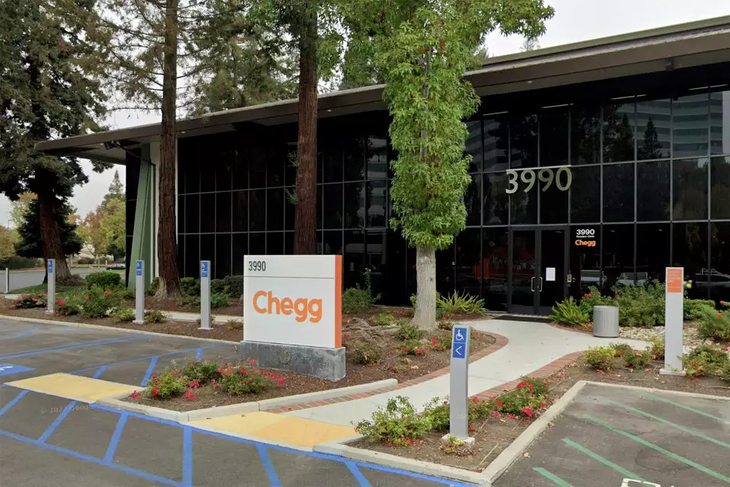

체그 vs 듀오링고
이해를 돕기 위해 현재 AI로 인해 와해 위협을 받는 순수 디지털 기업 두 곳을 살펴보자. 바로 체그와 듀오링고다. 체그는 학습자에게 단계별 교과서 솔루션, 작문 지원, 연습 문제, 온라인 강사와의 실시간 질의응답을 제공한다. 듀오링고는 연속 출석 인증 제도인 스트릭(steak), 사용자 간 경쟁 시스템인 리더보드(leaderboard) 등 게임화된 인터렉티브 활동으로 구성된 언어 학습을 제공하며, 온라인 행사도 진행한다. 이론적으로 생성형 AI는 체그와 듀오링고 모두에 상당히 파괴적일 수 있다. 학습자는 숙제를 할 때 체그에 가입하지 않고 챗GPT, 클로드(Claude)같은 대형언어모델(LLM)의 도움을 받을 수도 있다. 또 언어학습자는 듀오링고를 사용하는 대신 LLM에 맞춤형 언어 연습문제를 만들고, 실제 대화를 시뮬레이션하며, 학습자 개인의 속도와 필요에 맞춰 달라고 할 수도 있다. 그리고 두 회사 모두 생성형 AI를 포용했거나 적어도 그러려고 노력한 듯하다. 체그는 2023년 초 생성형 AI 툴 중심으로 서비스를 개정하였으며 현재 구독자인 학습자들에게 맞춤형 학습 솔루션을 제공하고 있다. 마찬가지로 2023년 3월, 듀오링고는 오픈AI의 GPT-4 기술을 활용한 프리미엄 구독 서비스, “듀오링고 맥스”를 내놓았다. 사용자는 이 서비스가 제공하는 “내 답변 설명하기(Explain My Answer)”, “역할극(Roleplay)”과 같은 기능을 이용해 상세한 설명을 읽고 상호작용 기반의 대화 연습을 할 수 있다. 이런 유사성에도 불구하고 최근 2년간(챗GPT는 2022년 11월에 출시되었다) 생성형 AI의 부상으로 두 기업의 사운은 극명하게 엇갈렸다. 이는 각 회사의 주가 변동 추이에서 확인할 수 있다. 2024년 11월 8일 현재, 체그(CHGG)는 주당 1.7달러에 거래되고 있다. 2년 전 28달러에서 거의 94% 하락한 가격이다. 듀오링고는 완전히 반대다. 2024년 11월 8일 기준, 듀오링고(DUOL) 주가는 약 320달러를 기록 중이다. 2년 전 70달러에서 무려 350% 가까이 상승했다. 그렇다면 이런 엄청난 차이를 투자자 입장에서 어떻게 해석할 수 있을까? 본질적인 특성상 체그 제품이 듀오링고보다 AI로 인해 범용화될 가능성이 높기 때문일까? 아니면 체그가 적응을 제때 효과적으로 하지 못한 탓일까? 답은 둘 다다. 체그 제품이 기능적인 의사소통을 중심으로 하며 단순하기 때문에(숙제의 특정 부분을 도와 달라고 요청하는 식) AI로 대체되기 더 쉽다고 볼 수도 있다. 반면 사용자의 참여를 유도하는 언어 학습 플랜은 짜기가 더 까다롭고, 그렇기 때문의 인간의 창의성이나 독창성이 발휘될 여지가 더 크며, AI에 덜 취약할 수 있다. 그러나 생성형 AI로 인한 와해에 듀오링고 제품 전략이 체그보다 훨씬 훌륭하게 대처했다는 점도 엄연한 사실이다. 사실, 듀오링고가 성공할 수 있었던 일등공신은 리더보드, 스트릭, 타 학습자와의 경쟁 등 소셜 기능이다. 이 기능들은 핵심인 언어학습 콘텐츠를 넘어 소속감과 참여를 이끌어낸다. 다시 말해 듀오링고는 커뮤니티 기반의 네트워크 효과를 창출함으로써, AI 기반 시스템을 활용한 1인 학습보다 훨씬 매력적인 서비스를 제공한 것이다. 반면 체그는 이런 커뮤니티 기반의 네트워크 효과를 만들지 못했기 때문에 체그의 서비스는 AI로 훨씬 쉽게 대체될 수 있었다.
마치며
제품이 AI 와해를 피하려면 어떤 요소가 필요한지 논의해 보고 듀오링고와 체그의 사례를 비교해 본 결과, 모든 기업에 적용되는 중요한 교훈을 얻을 수 있었다. 첫째, 물리적, 사회적 혹은 정서적 요소를 보강하는 등 AI가 파괴하기 가장 어려운 기능을 추가하거나 강화해야 한다. 둘째, AI를 위협으로 보지 말고, AI가 인간보다 월등한 부분(가령 반복적이고 데이터 중심적인 작업)에서는 AI를 적극 수용하고, AI를 활용해 제품을 지속적으로 발전시키는 자체적 데이터 피드백 루프를 만들어야 한다. 이런 자세로 AI를 대한다면 AI는 그저 비용 절감을 위한 대체재가 아니라 경쟁력을 높여주는 도구가 될 수 있다. 이 원칙은 노동자 개인에게도 적용된다. AI에 대체될까 노심초사하거나 조직, 산업 등에서 AI가 보급되는 것에 반대하지 말고, 이것을 기회로 삼는 편이 더 유익하다. 자신의 업무 중 AI에 맡기는 게 훨씬 좋은 작업은 무엇일지, 그리고 인간의 판단력과 직관이 계속 필요한 영역이라면 과연 어떤 부분에서 전문 지식이나 기술을 계발하면 좋을지 노동자 각자가 고민해 봐야 한다.



![[르포] 다니엘헤니도 꽂혔다…지식산업센터의 반전 [부동산360]](https://wimg.heraldcorp.com/news/cms/2024/11/24/my-p.v1.20241123.774ea68ac05d4d0780e654147d7908bb_R.png?type=h&h=120)



![“父는 죽고, 친모와 결혼하고” 재앙같은 예언…당사자 아들의 기구한 사연[이원율의 후암동 미술관-오이디푸스 편]](https://wimg.heraldcorp.com/news/cms/2024/11/23/news-a.v1.20241122.6f410829d2e847798d1f6f02d6796a42_T1.jpg?type=h&h=240)


![아이도 안 낳는데 큰 집 왜 사냐고?…천만에, 큰 집이 더 올랐다 [부동산360]](https://wimg.heraldcorp.com/news/cms/2024/11/24/rcv.YNA.20241118.PYH2024111813560001300_T1.jpg?type=h&h=240)


![“비트코인, 예전에 남친 말 듣고 샀는데 마이너스 77%”…사상최고 찍었는데 무슨 일? [투자360]](https://wimg.heraldcorp.com/news/cms/2024/11/22/news-p.v1.20241122.0cf61946edb24523a8f1c5a715bcae7d_T1.jpg?type=h&h=240)



![연예인에 빠져…“24개월 할부로 사더니” 전부 쓰레기통 행 [지구, 뭐래?]](https://wimg.heraldcorp.com/news/cms/2024/11/25/news-p.v1.20241120.bf9d50d5065347f3ba37696b2898bb31_T1.jpg?type=h&h=240)
![집 너무 안팔리자 아내가 꺼낸 말 “여보, 상가랑 아파트 바꿀까?”[부동산360]](https://wimg.heraldcorp.com/news/cms/2024/11/16/rcv.YNA.20241105.PYH2024110509190001300_T1.jpg?type=h&h=240)



